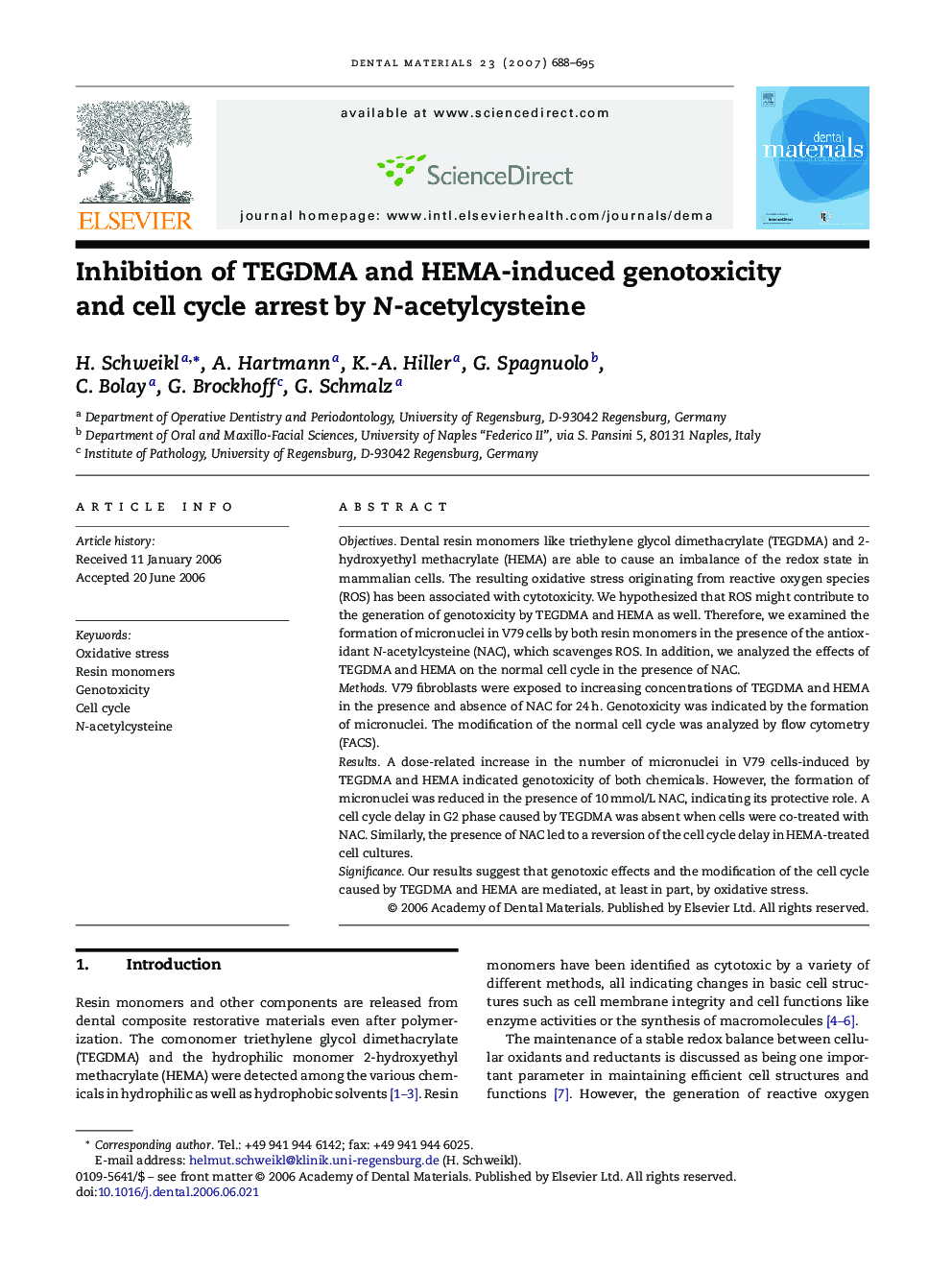| Article ID | Journal | Published Year | Pages | File Type |
|---|---|---|---|---|
| 1423329 | Dental Materials | 2007 | 8 Pages |
ObjectivesDental resin monomers like triethylene glycol dimethacrylate (TEGDMA) and 2-hydroxyethyl methacrylate (HEMA) are able to cause an imbalance of the redox state in mammalian cells. The resulting oxidative stress originating from reactive oxygen species (ROS) has been associated with cytotoxicity. We hypothesized that ROS might contribute to the generation of genotoxicity by TEGDMA and HEMA as well. Therefore, we examined the formation of micronuclei in V79 cells by both resin monomers in the presence of the antioxidant N-acetylcysteine (NAC), which scavenges ROS. In addition, we analyzed the effects of TEGDMA and HEMA on the normal cell cycle in the presence of NAC.MethodsV79 fibroblasts were exposed to increasing concentrations of TEGDMA and HEMA in the presence and absence of NAC for 24 h. Genotoxicity was indicated by the formation of micronuclei. The modification of the normal cell cycle was analyzed by flow cytometry (FACS).ResultsA dose-related increase in the number of micronuclei in V79 cells-induced by TEGDMA and HEMA indicated genotoxicity of both chemicals. However, the formation of micronuclei was reduced in the presence of 10 mmol/L NAC, indicating its protective role. A cell cycle delay in G2 phase caused by TEGDMA was absent when cells were co-treated with NAC. Similarly, the presence of NAC led to a reversion of the cell cycle delay in HEMA-treated cell cultures.SignificanceOur results suggest that genotoxic effects and the modification of the cell cycle caused by TEGDMA and HEMA are mediated, at least in part, by oxidative stress.
